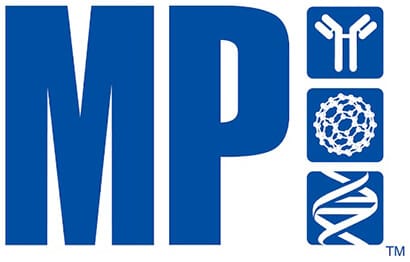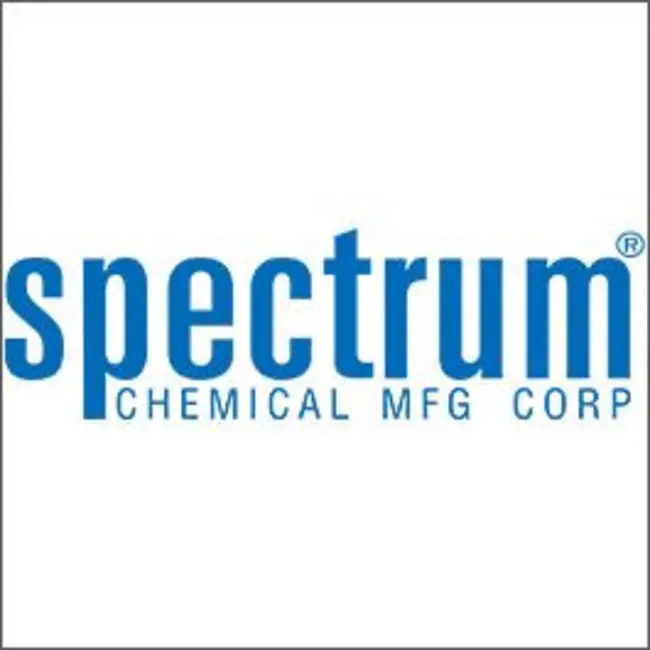GenScript Biotech
Showing 1551–1600 of 2554 results
-
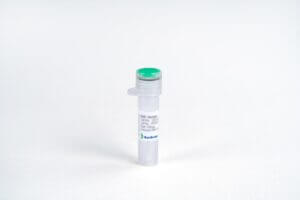
LIGHT, Human
$137.14 Add to cart View Product DetailsLIGHT, also known as tumor-necrosis factor (TNF) superfamily member 14 (TNFSF14), is predominantly expressed on activated immune cells and some tumor cells. LIGHT (homologous to lymphotoxin, exhibits inducible expression and competes with Herpes Simplex Virus glycoprotein D for Herpes Virus Entry Mediator, a receptor expressed by T cells), is a protein primarily expressed on activated T cells, activated Natural Killer (NK) cells, and immature dendritic cells (DC). LIGHT can function as both a soluble and cell surface-bound type II membrane protein and must be in its homotrimeric form to interact with its two primary functional receptors: Herpes Virus Entry Mediator (HVEM) and Lymphotoxin-β Receptor (LTβR). LIGHT signaling through these receptors have distinct functions that are cell-type dependent, but interactions with both types of receptors have immune-related implications in tumor biology.
-

Liquid container
$45.71 Add to cart View Product DetailsLiquid container for eStain L1, eStain L1C, eStain LG,eBlot L1, and eBlot LG.
-

LIX/CXCL5 (74aa), Mouse
$63.83 Add to cart View Product DetailsMouse LIX (C-X-C motif chemokine 5) is a small cytokine belonging to the CXC chemokine family that is cleaved into the following 2 chains [GCP-2(1-78) and GCP-2(9-78)]. Mouse LIX plays a role in reducing sensitivity to sunburn pain in some subjects, and is a potential target which could be used to understand more about pain in other inflammatory conditions. It is most closely related to two highly homologous human neutrophil chemoattractants GCP-2 and ENA-78. The first 78 amino acid residues within the predicted mature mouse LIX shares approximately 61% and 55% amino acid identity with human GCP-2 and ENA-78. This chemokine stimulates the chemotaxis of neutrophils possessing angiogenic properties. It elicits these effects by interacting with the cell surface chemokine receptor CXCR2.
-

LIX/CXCL5 (74aa), Mouse
$150.94 Add to cart View Product DetailsMouse LIX (C-X-C motif chemokine 5) is a small cytokine belonging to the CXC chemokine family that is cleaved into the following 2 chains [GCP-2(1-78) and GCP-2(9-78)]. Mouse LIX plays a role in reducing sensitivity to sunburn pain in some subjects, and is a potential target which could be used to understand more about pain in other inflammatory conditions. It is most closely related to two highly homologous human neutrophil chemoattractants GCP-2 and ENA-78. The first 78 amino acid residues within the predicted mature mouse LIX shares approximately 61% and 55% amino acid identity with human GCP-2 and ENA-78. This chemokine stimulates the chemotaxis of neutrophils possessing angiogenic properties. It elicits these effects by interacting with the cell surface chemokine receptor CXCR2.
-
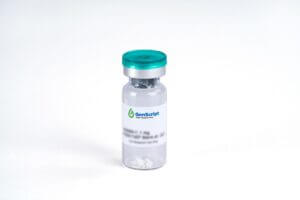
LIX/CXCL5 (92aa), Mouse
$2,242.50 Add to cart View Product DetailsThe mouse homolog of ENA-78 is called LIX. ENA-78/LIX is a CXC chemokine that signals through the CXCR2 receptor. It is expressed in monocytes, platelets, endothelial cells, and mast cells. ENA-78/LIX is a chemoattractant for neutrophils. The three naturally occurring variants of human ENA-78; ENA 5-78, ENA 9-78 and ENA 10-78, contain 74, 70, and 69 amino acid residues, respectively, and possess the same biological activity. ENA-78/LIX contains the four conserved cysteine residues present in CXC chemokines, and also contains the ‘ELR’ motif common to CXC chemokine that bind to the CXCR1 and CXCR2 receptors.
-

LIX/CXCL5 (92aa), Mouse
$169.05 Add to cart View Product DetailsThe mouse homolog of ENA-78 is called LIX. ENA-78/LIX is a CXC chemokine that signals through the CXCR2 receptor. It is expressed in monocytes, platelets, endothelial cells, and mast cells. ENA-78/LIX is a chemoattractant for neutrophils. The three naturally occurring variants of human ENA-78; ENA 5-78, ENA 9-78 and ENA 10-78, contain 74, 70, and 69 amino acid residues, respectively, and possess the same biological activity. ENA-78/LIX contains the four conserved cysteine residues present in CXC chemokines, and also contains the ‘ELR’ motif common to CXC chemokine that bind to the CXCR1 and CXCR2 receptors.
-
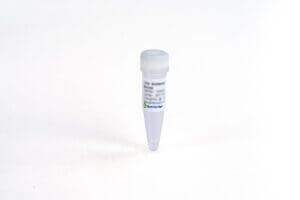
Lp-PLA2 (10D46), mAb, Mouse
$190.61 Add to cart View Product DetailsLipoprotein-associated phospholipase A2 (LpPLA2) is an enzyme which participates in proinflammatory process. High concentration of LpPLA2 in serum indicates risk of heart attack and stroke. LpPLA2 is considered as specific coronary marker for diagnosing cardiovascular heart disease.
-

Lp-PLA2 (10D46), mAb, Mouse
$1,906.13 Add to cart View Product DetailsLipoprotein-associated phospholipase A2 (LpPLA2) is an enzyme which participates in proinflammatory process. High concentration of LpPLA2 in serum indicates risk of heart attack and stroke. LpPLA2 is considered as specific coronary marker for diagnosing cardiovascular heart disease.
-

Lp-PLA2 (10D46), mAb, Mouse
$16,215.00 Add to cart View Product DetailsLipoprotein-associated phospholipase A2 (LpPLA2) is an enzyme which participates in proinflammatory process. High concentration of LpPLA2 in serum indicates risk of heart attack and stroke. LpPLA2 is considered as specific coronary marker for diagnosing cardiovascular heart disease.
-

Lp-PLA2 (9C42), mAb, Mouse
$190.61 Add to cart View Product DetailsLipoprotein-associated phospholipase A2 (LpPLA2) is an enzyme which participates in proinflammatory process. High concentration of LpPLA2 in serum indicates risk of heart attack and stroke. LpPLA2 is considered as specific coronary marker for diagnosing cardiovascular heart disease.
-

Lp-PLA2 (9C42), mAb, Mouse
$1,906.13 Add to cart View Product DetailsLipoprotein-associated phospholipase A2 (LpPLA2) is an enzyme which participates in proinflammatory process. High concentration of LpPLA2 in serum indicates risk of heart attack and stroke. LpPLA2 is considered as specific coronary marker for diagnosing cardiovascular heart disease.
-

Lp-PLA2 (9C42), mAb, Mouse
$16,215.00 Add to cart View Product DetailsLipoprotein-associated phospholipase A2 (LpPLA2) is an enzyme which participates in proinflammatory process. High concentration of LpPLA2 in serum indicates risk of heart attack and stroke. LpPLA2 is considered as specific coronary marker for diagnosing cardiovascular heart disease.
-
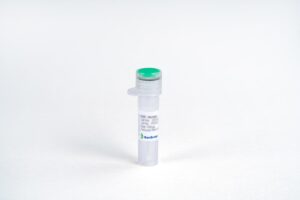
LR3-IGF-I (Receptor Grade), Human
$159.56 Add to cart View Product DetailsIGF-1 is a well-characterized basic peptide secreted by the liver that circulates in the blood. It has growth-regulating, insulin-like, mitogenic activities. IGF-1 is a growth factor that has a major, but not absolute, dependence on somatotropin. It is believed to be mainly active in adults in contrast to IGF-2, which is also a major fetal growth factor. Human Long R3 Insulin-like Growth Factor-1 (rhLR3IGF-1) contains an 83 amino acid analog of human IGF-I. Compared to the complete human IGF-I sequence, an addition of the rhLR3IGF-1 includes the substitution of an Arg for the Glu at position 3 (hence R3)and a13 amino acid extension peptide at the N-terminus. An enhanced potency is due to the markedly decreased binding of human Long-R3-IGF-I to IGF binding proteins which normally inhibit the biological actions of IGFs.
-

LR3-IGF-I (Receptor Grade), Human
$45.71 Add to cart View Product DetailsIGF-1 is a well-characterized basic peptide secreted by the liver that circulates in the blood. It has growth-regulating, insulin-like, mitogenic activities. IGF-1 is a growth factor that has a major, but not absolute, dependence on somatotropin. It is believed to be mainly active in adults in contrast to IGF-2, which is also a major fetal growth factor. Human Long R3 Insulin-like Growth Factor-1 (rhLR3IGF-1) contains an 83 amino acid analog of human IGF-I. Compared to the complete human IGF-I sequence, an addition of the rhLR3IGF-1 includes the substitution of an Arg for the Glu at position 3 (hence R3)and a13 amino acid extension peptide at the N-terminus. An enhanced potency is due to the markedly decreased binding of human Long-R3-IGF-I to IGF binding proteins which normally inhibit the biological actions of IGFs.
-

M-CSF, Human
$2,018.25 Add to cart View Product DetailsMacrophage-Colony Stimulating Factor (M-CSF), also known as Colony Stimulating Factor-1 (CSF-1), is a hematopoietic growth factor. It can stimulate the survival, proliferation and differentiation of mononuclear phagocytes, in addition to the spreading and motility of macrophages. In mammals, it exits three isoforms, which invariably share an N-terminal 32-aa signal peptide, a 149-residue growth factor domain, a 21-residue transmembrane region and a 37-aa cytoplasmictail. M-CSF is mainly produced by monocytes, macrophages, fibroblasts, and endothelial cells. M-CSF interaction with its receptor, c-fms, has been implicated in the growth, invasion, and metastasis of of several diseases, including breast and endometrial cancers. The biological activity of human M-CSF is maintained within the 149-aa growth factor domain, and it is only active in the disulfide-linked dimeric form, which is bonded at Cys63.
-

M-CSF, Human
$86.25 Add to cart View Product DetailsMacrophage-Colony Stimulating Factor (M-CSF), also known as Colony Stimulating Factor-1 (CSF-1), is a hematopoietic growth factor. It can stimulate the survival, proliferation and differentiation of mononuclear phagocytes, in addition to the spreading and motility of macrophages. In mammals, it exits three isoforms, which invariably share an N-terminal 32-aa signal peptide, a 149-residue growth factor domain, a 21-residue transmembrane region and a 37-aa cytoplasmictail. M-CSF is mainly produced by monocytes, macrophages, fibroblasts, and endothelial cells. M-CSF interaction with its receptor, c-fms, has been implicated in the growth, invasion, and metastasis of of several diseases, including breast and endometrial cancers. The biological activity of human M-CSF is maintained within the 149-aa growth factor domain, and it is only active in the disulfide-linked dimeric form, which is bonded at Cys63.
-

M-CSF, Human
$439.88 Add to cart View Product DetailsMacrophage-Colony Stimulating Factor (M-CSF), also known as Colony Stimulating Factor-1 (CSF-1), is a hematopoietic growth factor. It can stimulate the survival, proliferation and differentiation of mononuclear phagocytes, in addition to the spreading and motility of macrophages. In mammals, it exits three isoforms, which invariably share an N-terminal 32-aa signal peptide, a 149-residue growth factor domain, a 21-residue transmembrane region and a 37-aa cytoplasmictail. M-CSF is mainly produced by monocytes, macrophages, fibroblasts, and endothelial cells. M-CSF interaction with its receptor, c-fms, has been implicated in the growth, invasion, and metastasis of of several diseases, including breast and endometrial cancers. The biological activity of human M-CSF is maintained within the 149-aa growth factor domain, and it is only active in the disulfide-linked dimeric form, which is bonded at Cys63.
-

M-CSF, Human(CHO-expressed)
$2,018.25 Add to cart View Product DetailsMacrophage-Colony Stimulating Factor (M-CSF), also known as Colony Stimulating Factor-1 (CSF-1), is a hematopoietic growth factor. It can stimulate the survival, proliferation and differentiation of mononuclear phagocytes, in addition to the spreading and motility of macrophages. In mammals, it exits three isoforms, which invariably share an N-terminal 32-aa signal peptide, a 149-residue growth factor domain, a 21-residue transmembrane region and a 37-aa cytoplasmictail. M-CSF is mainly produced by monocytes, macrophages, fibroblasts, and endothelial cells. M-CSF interaction with its receptor, c-fms, has been implicated in the growth, invasion, and metastasis of of several diseases, including breast and endometrial cancers. The biological activity of human M-CSF is maintained within the 149-aa growth factor domain, and it is only active in the disulfide-linked dimeric form, which is bonded at Cys63.
-

M-CSF, Human(CHO-expressed)
$86.25 Add to cart View Product DetailsMacrophage-Colony Stimulating Factor (M-CSF), also known as Colony Stimulating Factor-1 (CSF-1), is a hematopoietic growth factor. It can stimulate the survival, proliferation and differentiation of mononuclear phagocytes, in addition to the spreading and motility of macrophages. In mammals, it exits three isoforms, which invariably share an N-terminal 32-aa signal peptide, a 149-residue growth factor domain, a 21-residue transmembrane region and a 37-aa cytoplasmictail. M-CSF is mainly produced by monocytes, macrophages, fibroblasts, and endothelial cells. M-CSF interaction with its receptor, c-fms, has been implicated in the growth, invasion, and metastasis of of several diseases, including breast and endometrial cancers. The biological activity of human M-CSF is maintained within the 149-aa growth factor domain, and it is only active in the disulfide-linked dimeric form, which is bonded at Cys63.
-

M-CSF, Human(CHO-expressed)
$271.69 Add to cart View Product DetailsMacrophage-Colony Stimulating Factor (M-CSF), also known as Colony Stimulating Factor-1 (CSF-1), is a hematopoietic growth factor. It can stimulate the survival, proliferation and differentiation of mononuclear phagocytes, in addition to the spreading and motility of macrophages. In mammals, it exits three isoforms, which invariably share an N-terminal 32-aa signal peptide, a 149-residue growth factor domain, a 21-residue transmembrane region and a 37-aa cytoplasmictail. M-CSF is mainly produced by monocytes, macrophages, fibroblasts, and endothelial cells. M-CSF interaction with its receptor, c-fms, has been implicated in the growth, invasion, and metastasis of of several diseases, including breast and endometrial cancers. The biological activity of human M-CSF is maintained within the 149-aa growth factor domain, and it is only active in the disulfide-linked dimeric form, which is bonded at Cys63.
-

M-CSF, Mouse
$2,018.25 Add to cart View Product DetailsMacrophage-Colony Stimulating Factor (M-CSF), also known as Colony Stimulating Factor-1 (CSF-1), is a hematopoietic growth factor. It can stimulate the survival, proliferation and differentiation of mononuclear phagocytes, in addition to the spreading and motility of macrophages. In mammals, it exits three isoforms, which invariably share an N-terminal 32-aa signal peptide, a 149-residue growth factor domain, a 21-residue transmembrane region and a 37-aa cytoplasmictail. M-CSF is mainly produced by monocytes, macrophages, fibroblasts, and endothelial cells. M-CSF interaction with its receptor, c-fms, has been implicated in the growth, invasion, and metastasis of of several diseases, including breast and endometrial cancers. The biological activity of human M-CSF is maintained within the 149-aa growth factor domain, and it is only active in the disulfide-linked dimeric form, which is bonded at Cys63.
-

M-CSF, Mouse
$86.25 Add to cart View Product DetailsMacrophage-Colony Stimulating Factor (M-CSF), also known as Colony Stimulating Factor-1 (CSF-1), is a hematopoietic growth factor. It can stimulate the survival, proliferation and differentiation of mononuclear phagocytes, in addition to the spreading and motility of macrophages. In mammals, it exits three isoforms, which invariably share an N-terminal 32-aa signal peptide, a 149-residue growth factor domain, a 21-residue transmembrane region and a 37-aa cytoplasmictail. M-CSF is mainly produced by monocytes, macrophages, fibroblasts, and endothelial cells. M-CSF interaction with its receptor, c-fms, has been implicated in the growth, invasion, and metastasis of of several diseases, including breast and endometrial cancers. The biological activity of human M-CSF is maintained within the 149-aa growth factor domain, and it is only active in the disulfide-linked dimeric form, which is bonded at Cys63.
-

M-CSF, Mouse
$271.69 Add to cart View Product DetailsMacrophage-Colony Stimulating Factor (M-CSF), also known as Colony Stimulating Factor-1 (CSF-1), is a hematopoietic growth factor. It can stimulate the survival, proliferation and differentiation of mononuclear phagocytes, in addition to the spreading and motility of macrophages. In mammals, it exits three isoforms, which invariably share an N-terminal 32-aa signal peptide, a 149-residue growth factor domain, a 21-residue transmembrane region and a 37-aa cytoplasmictail. M-CSF is mainly produced by monocytes, macrophages, fibroblasts, and endothelial cells. M-CSF interaction with its receptor, c-fms, has been implicated in the growth, invasion, and metastasis of of several diseases, including breast and endometrial cancers. The biological activity of human M-CSF is maintained within the 149-aa growth factor domain, and it is only active in the disulfide-linked dimeric form, which is bonded at Cys63.
-

M-CSF, Mouse
$86.25 Add to cart View Product DetailsMacrophage-Colony Stimulating Factor (M-CSF), also known as Colony Stimulating Factor-1 (CSF-1), is a hematopoietic growth factor. It can stimulate the survival, proliferation and differentiation of mononuclear phagocytes, in addition to the spreading and motility of macrophages. In mammals, it exits three isoforms, which invariably share an N-terminal 32-aa signal peptide, a 149-residue growth factor domain, a 21-residue transmembrane region and a 37-aa cytoplasmictail. M-CSF is mainly produced by monocytes, macrophages, fibroblasts, and endothelial cells. M-CSF interaction with its receptor, c-fms, has been implicated in the growth, invasion, and metastasis of of several diseases, including breast and endometrial cancers. The biological activity of human M-CSF is maintained within the 149-aa growth factor domain, and it is only active in the disulfide-linked dimeric form, which is bonded at Cys63.
-

M-CSF, Mouse
$271.69 Add to cart View Product DetailsMacrophage-Colony Stimulating Factor (M-CSF), also known as Colony Stimulating Factor-1 (CSF-1), is a hematopoietic growth factor. It can stimulate the survival, proliferation and differentiation of mononuclear phagocytes, in addition to the spreading and motility of macrophages. In mammals, it exits three isoforms, which invariably share an N-terminal 32-aa signal peptide, a 149-residue growth factor domain, a 21-residue transmembrane region and a 37-aa cytoplasmictail. M-CSF is mainly produced by monocytes, macrophages, fibroblasts, and endothelial cells. M-CSF interaction with its receptor, c-fms, has been implicated in the growth, invasion, and metastasis of of several diseases, including breast and endometrial cancers. The biological activity of human M-CSF is maintained within the 149-aa growth factor domain, and it is only active in the disulfide-linked dimeric form, which is bonded at Cys63.
-

M-CSF, Rat
$2,307.19 Add to cart View Product DetailsMacrophage-Colony Stimulating Factor (M-CSF), also known as Colony Stimulating Factor-1 (CSF-1), is a hematopoietic growth factor. It can stimulate the survival, proliferation and differentiation of mononuclear phagocytes, in addition to the spreading and motility of macrophages. In mammals, it exits three isoforms, which invariably share an N-terminal 32-aa signal peptide, a 149-residue growth factor domain, a 21-residue transmembrane region and a 37-aa cytoplasmictail. M-CSF is mainly produced by monocytes, macrophages, fibroblasts, and endothelial cells. M-CSF interaction with its receptor, c-fms, has been implicated in the growth, invasion, and metastasis of of several diseases, including breast and endometrial cancers. The biological activity of human M-CSF is maintained within the 149-aa growth factor domain, and it is only active in the disulfide-linked dimeric form, which is bonded at Cys63.
-

M-CSF, Rat
$86.25 Add to cart View Product DetailsMacrophage-Colony Stimulating Factor (M-CSF), also known as Colony Stimulating Factor-1 (CSF-1), is a hematopoietic growth factor. It can stimulate the survival, proliferation and differentiation of mononuclear phagocytes, in addition to the spreading and motility of macrophages. In mammals, it exits three isoforms, which invariably share an N-terminal 32-aa signal peptide, a 149-residue growth factor domain, a 21-residue transmembrane region and a 37-aa cytoplasmictail. M-CSF is mainly produced by monocytes, macrophages, fibroblasts, and endothelial cells. M-CSF interaction with its receptor, c-fms, has been implicated in the growth, invasion, and metastasis of of several diseases, including breast and endometrial cancers. The biological activity of human M-CSF is maintained within the 149-aa growth factor domain, and it is only active in the disulfide-linked dimeric form, which is bonded at Cys63.
-

M-CSF, Rat
$271.69 Add to cart View Product DetailsMacrophage-Colony Stimulating Factor (M-CSF), also known as Colony Stimulating Factor-1 (CSF-1), is a hematopoietic growth factor. It can stimulate the survival, proliferation and differentiation of mononuclear phagocytes, in addition to the spreading and motility of macrophages. In mammals, it exits three isoforms, which invariably share an N-terminal 32-aa signal peptide, a 149-residue growth factor domain, a 21-residue transmembrane region and a 37-aa cytoplasmictail. M-CSF is mainly produced by monocytes, macrophages, fibroblasts, and endothelial cells. M-CSF interaction with its receptor, c-fms, has been implicated in the growth, invasion, and metastasis of of several diseases, including breast and endometrial cancers. The biological activity of human M-CSF is maintained within the 149-aa growth factor domain, and it is only active in the disulfide-linked dimeric form, which is bonded at Cys63.
-

M-CSF, Rat
$155.25 Add to cart View Product DetailsMacrophage-Colony Stimulating Factor (M-CSF), also known as Colony Stimulating Factor-1 (CSF-1), is a hematopoietic growth factor. It can stimulate the survival, proliferation and differentiation of mononuclear phagocytes, in addition to the spreading and motility of macrophages. In mammals, it exits three isoforms, which invariably share an N-terminal 32-aa signal peptide, a 149-residue growth factor domain, a 21-residue transmembrane region and a 37-aa cytoplasmictail. M-CSF is mainly produced by monocytes, macrophages, fibroblasts, and endothelial cells. M-CSF interaction with its receptor, c-fms, has been implicated in the growth, invasion, and metastasis of of several diseases, including breast and endometrial cancers. The biological activity of human M-CSF is maintained within the 149-aa growth factor domain, and it is only active in the disulfide-linked dimeric form, which is bonded at Cys63.
-

M-CSF, Rat
$68.14 Add to cart View Product DetailsMacrophage-Colony Stimulating Factor (M-CSF), also known as Colony Stimulating Factor-1 (CSF-1), is a hematopoietic growth factor. It can stimulate the survival, proliferation and differentiation of mononuclear phagocytes, in addition to the spreading and motility of macrophages. In mammals, it exits three isoforms, which invariably share an N-terminal 32-aa signal peptide, a 149-residue growth factor domain, a 21-residue transmembrane region and a 37-aa cytoplasmictail. M-CSF is mainly produced by monocytes, macrophages, fibroblasts, and endothelial cells. M-CSF interaction with its receptor, c-fms, has been implicated in the growth, invasion, and metastasis of of several diseases, including breast and endometrial cancers. The biological activity of human M-CSF is maintained within the 149-aa growth factor domain, and it is only active in the disulfide-linked dimeric form, which is bonded at Cys63.
-

M-MuLV Reverse Transcriptase
$50.03 Add to cart View Product DetailsGenScript M-MuLV Reverse Transcriptase (M-MLV) is derived from a cloned region of the pol gene of MMLV and isolated from an E. coli strain overexpressing this construct. To increase cDNA yields and get a higher percentage of longer transcripts, the M-MLV Reverse Transcriptase has been modified with reduced RNase H activity, and expressed free of exogenous RNases and other nucleases. The enzyme can synthesize a complementary cDNA strand initiating from a primer using RNA as template (cDNA synthesis), making it ideal for a wide range of applications.
-

M-MuLV Reverse Transcriptase
$163.01 Add to cart View Product DetailsGenScript M-MuLV Reverse Transcriptase (M-MLV) is derived from a cloned region of the pol gene of MMLV and isolated from an E. coli strain overexpressing this construct. To increase cDNA yields and get a higher percentage of longer transcripts, the M-MLV Reverse Transcriptase has been modified with reduced RNase H activity, and expressed free of exogenous RNases and other nucleases. The enzyme can synthesize a complementary cDNA strand initiating from a primer using RNA as template (cDNA synthesis), making it ideal for a wide range of applications.
-

Maspin, Human
$2,238.19 Add to cart View Product DetailsMammary serine protease inhibitor (Maspin), also known as serpin B5 is a non-inhibitory serpin that is encoded by the SERPINB5 gene in humans. The protein is expressed predominantly in normal mammary epithelial cells but at significantly reduced levels or absent in most breast carcinomas. As it does not undergo the S (stressed) to R (relaxed) conformational transition characteristic of active serpins, it exhibits no serine protease inhibitory activity. The maspin functions as tumor suppressor, blocking the growth, invasion, and metastatic properties of mammary tumors. This anti-tumor activity is achieved, in part, by the ability of maspin to inhibit angiogenesis and to preferentially promote apoptosis of tumor cells.
-

Maspin, Human
$452.81 Add to cart View Product DetailsMammary serine protease inhibitor (Maspin), also known as serpin B5 is a non-inhibitory serpin that is encoded by the SERPINB5 gene in humans. The protein is expressed predominantly in normal mammary epithelial cells but at significantly reduced levels or absent in most breast carcinomas. As it does not undergo the S (stressed) to R (relaxed) conformational transition characteristic of active serpins, it exhibits no serine protease inhibitory activity. The maspin functions as tumor suppressor, blocking the growth, invasion, and metastatic properties of mammary tumors. This anti-tumor activity is achieved, in part, by the ability of maspin to inhibit angiogenesis and to preferentially promote apoptosis of tumor cells.
-
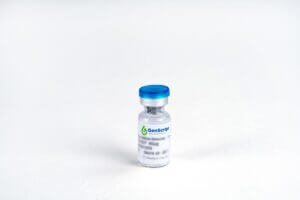
MBP-tag Antibody, mAb, Mouse
$87.98 Add to cart View Product DetailsGenScript MBP-tag Antibody, mAb, Mouse specifically reacts with fusion proteins containing MBP epitope tags.
-

MCP-1/CCL2, Human
$1,323.94 Add to cart View Product DetailsCCL2, also known as monocyte chemotactic and activating factor (MCAF), was initially purified independently by two groups based on its ability to chemoattract monocytes. Subsequent to its cloning and sequencing, it became evident that this protein is also identical to the product of the human JE gene. The JE gene, originally identified in mouse fibroblasts, is a plateletderived growth factor (PDGF)inducible gene. The human CCL2 cDNA encodes a 99 amino acid residue precursor protein with a 23 residue hydrophobic signal peptide that is cleaved to generate the 76 residue mature protein. Natural CCL2 is heterogeneous in size due to the addition of Olinked carbohydrates and sialic acid residues. In addition to fibroblasts; tumor cells, smooth muscle cells, endothelial cells, and mononuclear phagocytes can also produce CCL2 either constitutively or upon stimulation by various stimuli. CCL2 is a member of the β (CC) subfamily of chemokines. Recently, the existence of MCP2 and MCP3 with 62% and 73% amino acid identity respectively, to CCL2 have been reported.
-

MCP-1/CCL2, Human
$99.19 Add to cart View Product DetailsCCL2, also known as monocyte chemotactic and activating factor (MCAF), was initially purified independently by two groups based on its ability to chemoattract monocytes. Subsequent to its cloning and sequencing, it became evident that this protein is also identical to the product of the human JE gene. The JE gene, originally identified in mouse fibroblasts, is a plateletderived growth factor (PDGF)inducible gene. The human CCL2 cDNA encodes a 99 amino acid residue precursor protein with a 23 residue hydrophobic signal peptide that is cleaved to generate the 76 residue mature protein. Natural CCL2 is heterogeneous in size due to the addition of Olinked carbohydrates and sialic acid residues. In addition to fibroblasts; tumor cells, smooth muscle cells, endothelial cells, and mononuclear phagocytes can also produce CCL2 either constitutively or upon stimulation by various stimuli. CCL2 is a member of the β (CC) subfamily of chemokines. Recently, the existence of MCP2 and MCP3 with 62% and 73% amino acid identity respectively, to CCL2 have been reported.
-

MCP-1/CCL2, Human
$43.13 Add to cart View Product DetailsCCL2, also known as monocyte chemotactic and activating factor (MCAF), was initially purified independently by two groups based on its ability to chemoattract monocytes. Subsequent to its cloning and sequencing, it became evident that this protein is also identical to the product of the human JE gene. The JE gene, originally identified in mouse fibroblasts, is a plateletderived growth factor (PDGF)inducible gene. The human CCL2 cDNA encodes a 99 amino acid residue precursor protein with a 23 residue hydrophobic signal peptide that is cleaved to generate the 76 residue mature protein. Natural CCL2 is heterogeneous in size due to the addition of Olinked carbohydrates and sialic acid residues. In addition to fibroblasts; tumor cells, smooth muscle cells, endothelial cells, and mononuclear phagocytes can also produce CCL2 either constitutively or upon stimulation by various stimuli. CCL2 is a member of the β (CC) subfamily of chemokines. Recently, the existence of MCP2 and MCP3 with 62% and 73% amino acid identity respectively, to CCL2 have been reported.
-

MCP-1/CCL2, Mouse
$1,323.94 Add to cart View Product DetailsChemokine (C-C motif) ligand 2 (CCL2) is also referred to as monocyte chemotactic protein 1 (MCP1) and small inducible cytokine A2. CCL2 is a small cytokine that belongs to the CC chemokine family. CCL2 recruits monocytes, memory T cells, and dendritic cells to the sites of inflammation produced by either tissue injury or infection. CCL2 is implicated in the pathogeneses of several types of disease characterized by monocytic infiltrates, such as psoriasis, rheumatoid arthritis and atherosclerosis. CCL2 is anchored in the plasma membrane of endothelial cells by glycosaminoglycan side chains of proteoglycans. CCL2 is primarily secreted by monocytes, macrophages and dendritic cells. CCL2 can signal through the CCR2 receptor.
-

MCP-1/CCL2, Mouse
$94.88 Add to cart View Product DetailsChemokine (C-C motif) ligand 2 (CCL2) is also referred to as monocyte chemotactic protein 1 (MCP1) and small inducible cytokine A2. CCL2 is a small cytokine that belongs to the CC chemokine family. CCL2 recruits monocytes, memory T cells, and dendritic cells to the sites of inflammation produced by either tissue injury or infection. CCL2 is implicated in the pathogeneses of several types of disease characterized by monocytic infiltrates, such as psoriasis, rheumatoid arthritis and atherosclerosis. CCL2 is anchored in the plasma membrane of endothelial cells by glycosaminoglycan side chains of proteoglycans. CCL2 is primarily secreted by monocytes, macrophages and dendritic cells. CCL2 can signal through the CCR2 receptor.
-

MCP-1/CCL2, Mouse
$51.75 Add to cart View Product DetailsChemokine (C-C motif) ligand 2 (CCL2) is also referred to as monocyte chemotactic protein 1 (MCP1) and small inducible cytokine A2. CCL2 is a small cytokine that belongs to the CC chemokine family. CCL2 recruits monocytes, memory T cells, and dendritic cells to the sites of inflammation produced by either tissue injury or infection. CCL2 is implicated in the pathogeneses of several types of disease characterized by monocytic infiltrates, such as psoriasis, rheumatoid arthritis and atherosclerosis. CCL2 is anchored in the plasma membrane of endothelial cells by glycosaminoglycan side chains of proteoglycans. CCL2 is primarily secreted by monocytes, macrophages and dendritic cells. CCL2 can signal through the CCR2 receptor.
-
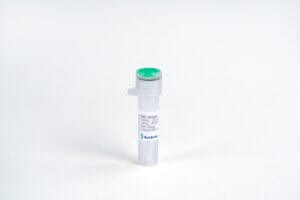
MCP‑3/CCL7, Human(CHO-expressed)
$1,323.94 Add to cart View Product DetailsChemokine (C-C motif) ligand 7 (CCL7) is a small cytokine that was previously called monocyte-specific chemokine 3 (MCP-3). Due to CCL7 possessing two adjacent N-terminal cysteine residues in its mature form, it is classified within the subfamily of chemokines known as CC chemokines. CCL7 specifically attracts monocytes, and regulates macrophage function. It is produced by certain tumor cell lines and by macrophages. This chemokine is located on chromosome 17 in humans, within a large cluster containing many other CC chemokines and is most closely related to CCL2. CCL7 can signal through the CCR1, CCR2 and CCR3 receptors.
-

MCP‑3/CCL7, Human(CHO-expressed)
$90.56 Add to cart View Product DetailsChemokine (C-C motif) ligand 7 (CCL7) is a small cytokine that was previously called monocyte-specific chemokine 3 (MCP-3). Due to CCL7 possessing two adjacent N-terminal cysteine residues in its mature form, it is classified within the subfamily of chemokines known as CC chemokines. CCL7 specifically attracts monocytes, and regulates macrophage function. It is produced by certain tumor cell lines and by macrophages. This chemokine is located on chromosome 17 in humans, within a large cluster containing many other CC chemokines and is most closely related to CCL2. CCL7 can signal through the CCR1, CCR2 and CCR3 receptors.
-

MCP‑3/CCL7, Human(CHO-expressed)
$155.25 Add to cart View Product DetailsChemokine (C-C motif) ligand 7 (CCL7) is a small cytokine that was previously called monocyte-specific chemokine 3 (MCP-3). Due to CCL7 possessing two adjacent N-terminal cysteine residues in its mature form, it is classified within the subfamily of chemokines known as CC chemokines. CCL7 specifically attracts monocytes, and regulates macrophage function. It is produced by certain tumor cell lines and by macrophages. This chemokine is located on chromosome 17 in humans, within a large cluster containing many other CC chemokines and is most closely related to CCL2. CCL7 can signal through the CCR1, CCR2 and CCR3 receptors.
-

Membrane Spacer
$43.13 Add to cart View Product DetailsMembrane spacer for eZwest Lite (L00816)
-
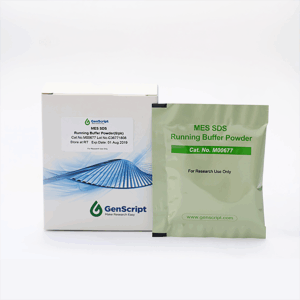
MES SDS Running Buffer Powder
$29.33 Add to cart View Product DetailsMES SDS Running Buffer is formulated for running ExpressPlusᵀᴹ and SurePAGEᵀᴹ, Bis-Tris gels. This buffer is ideal for separating small- and medium- sized proteins. For separation of large- to medium- sized proteins, Tris-MOPS SDS buffer (M00138) is recommended.
Reconstitute with 1000 ml deionized water to make 1X running buffer per pack of powder. Do not use acid or base to adjust the pH. -

Mesothelin, hFc, Human
$1,035.00 Add to cart View Product DetailsMesothelin, also known as MSLN, is a 40 kDa protein that is expressed in mesothelial cells. It has been reported that this protein is over expressed in several human tumors, including mesothelioma, ovarian cancer, pancreatic adenocarcinoma, lung adenocarcinoma, and cholangiocarcinoma. Mesothelin can bind MUC16 (also known as CA125), indicating that the interaction of mesothelin and MUC16 may contribute to the implantation and peritoneal spread of tumors by cell adhesion. Since mesothelin is overexpressed in several cancers and is immunogenic, the protein could be exploited as tumor marker or as the antigenic target of a therapeutic cancer vaccine.
-

Mesothelin, hFc, Human
$172.50 Add to cart View Product DetailsMesothelin, also known as MSLN, is a 40 kDa protein that is expressed in mesothelial cells. It has been reported that this protein is over expressed in several human tumors, including mesothelioma, ovarian cancer, pancreatic adenocarcinoma, lung adenocarcinoma, and cholangiocarcinoma. Mesothelin can bind MUC16 (also known as CA125), indicating that the interaction of mesothelin and MUC16 may contribute to the implantation and peritoneal spread of tumors by cell adhesion. Since mesothelin is overexpressed in several cancers and is immunogenic, the protein could be exploited as tumor marker or as the antigenic target of a therapeutic cancer vaccine.
-

Mesothelin, His, Human
$1,035.00 Add to cart View Product DetailsMesothelin, also known as MSLN, is a 40 kDa protein that is expressed in mesothelial cells. It has been reported that this protein is over expressed in several human tumors, including mesothelioma, ovarian cancer, pancreatic adenocarcinoma, lung adenocarcinoma, and cholangiocarcinoma. Mesothelin can bind MUC16 (also known as CA125), indicating that the interaction of mesothelin and MUC16 may contribute to the implantation and peritoneal spread of tumors by cell adhesion. Since mesothelin is overexpressed in several cancers and is immunogenic, the protein could be exploited as tumor marker or as the antigenic target of a therapeutic cancer vaccine.
-

Mesothelin, His, Human
$172.50 Add to cart View Product DetailsMesothelin, also known as MSLN, is a 40 kDa protein that is expressed in mesothelial cells. It has been reported that this protein is over expressed in several human tumors, including mesothelioma, ovarian cancer, pancreatic adenocarcinoma, lung adenocarcinoma, and cholangiocarcinoma. Mesothelin can bind MUC16 (also known as CA125), indicating that the interaction of mesothelin and MUC16 may contribute to the implantation and peritoneal spread of tumors by cell adhesion. Since mesothelin is overexpressed in several cancers and is immunogenic, the protein could be exploited as tumor marker or as the antigenic target of a therapeutic cancer vaccine.



